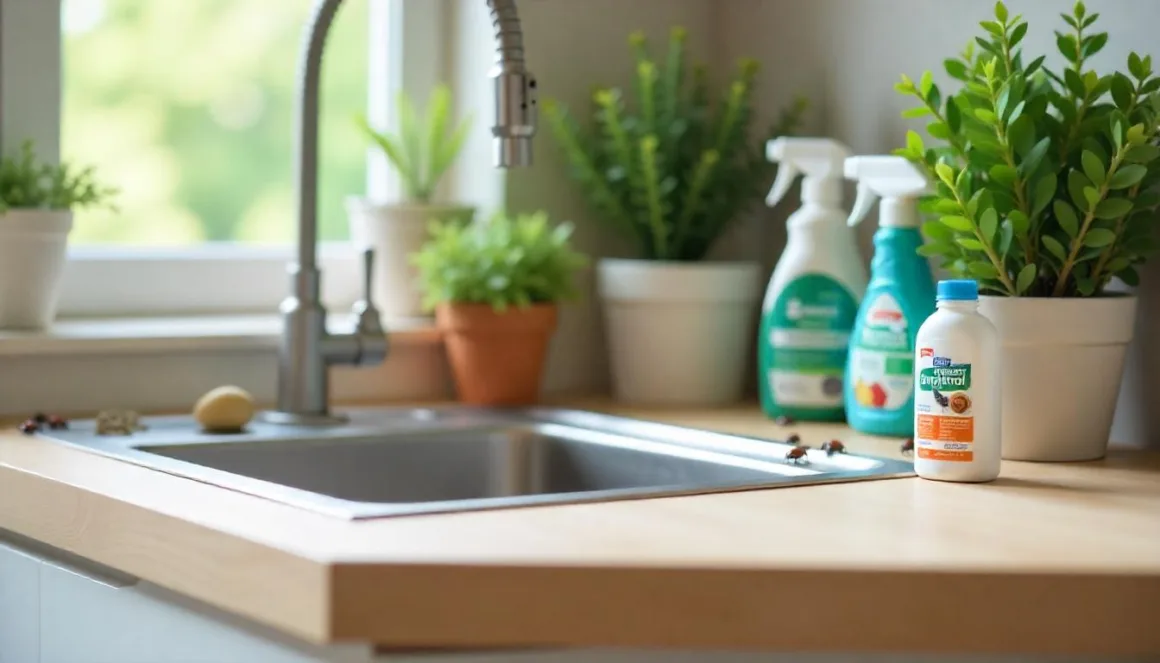Table of Contents Show
Pest pressure has been constant for all modern homes across the globe. Traditional pests were still able to invade homes, but recently, technologies such as those based on smart devices have introduced new species, as well as weed invasion during wet seasons and pest invasion in warmer climates with milder winters.
Even a few years ago, much of the knowledge people acquired about some species evolved rapidly concerning simple methods. Some particular spot treatments may provide relief for a short period, but nothing can replace a layered and ongoing strategy for better nesting hygiene.
Assessing Effective Pest Management Approaches
Integrated pest management (IPM) blends different methods to control pests with minimal risk. IPM relies on three main approaches:
- Exclusion: Blocking entry points—using caulk, mesh, and seals—keeps pests outside.
- Specific Treatments: Baits or spot sprays will target the pests where they are hiding or feeding instead of treating whole areas.
- Changing the Habitat: Moisture control, decluttering, and landscaping changes would deprive pests of their hiding and breeding sites.
Scenario:
A kitchen with frequent crumbs and spills would draw a considerable amount of pest such as ants and cockroaches. Spraying the perimeter would act as a temporary barrier, but placing targeted baits and sealing cracks near the sink will address the root issue without excess chemicals.
Cost-Benefit and Safety:
Choosing between chemical and non-chemical tactics means considering health risks, pet safety, and the risk of pests returning. While perimeter sprays are fast, they can expose residents to chemicals. Combining exclusion and habitat changes offers safer, longer-lasting results in most situations.
Comparison Table:
| Approach | Pros | Cons | Best Use |
| Exclusion | Low risk, long-term effect | Initial effort needed | All home areas |
| Targeted Treatments | Quick results, focus on hotspots | Possible chemical exposure | Kitchens, bathrooms |
| Habitat Modification | Safer, improves overall hygiene | Needs upkeep | Yards, basements |
Implementing Eco-Friendly Pest Protection
Eco-friendly pest controls use ingredients and methods that target pests but limit harm to other living things. Plant-based repellents, beneficial predatory insects (like ladybugs or nematodes), and pheromone-based traps help reduce pest numbers without blanket spraying.
Examples:
- Diatomaceous earth: A non-toxic powder that scratches and dries out insect bodies when sprinkled in cracks or along walls.
- Insect growth regulators: Disrupt pest life cycles, stopping pests from developing into breeding adults while sparing most non-target species.
These options limit the impact on pets and beneficial insects. Combining them with mechanical controls—such as glue boards under appliances and door sweeps at entryways—enhances outcomes. Regular inspections help detect activity early and reveal if the plan is effective. Modifying strategies based on pest activity ensures lasting protection.

Working With Professional Pest Solutions
DIY methods may not handle every situation. When infestations threaten structure, outpace home treatments, or involve protected wildlife, expert help is needed.
Vetting Steps:
- Check professional certifications and licenses.
- Ask for clear service guarantees.
- Read unbiased reviews and third-party feedback.
When searching for experts, it’s wise to choose someone with proven experience, such as pest control St George. These specialists have tools, training, and monitoring systems that spot hidden risks. Combining professional visits with regular home care helps protect against pests that go unnoticed.
Seasonal Pest Prevention and Maintenance
Staying ahead of pests requires action in every season. A simple schedule prevents small issues from escalating into infestations and ensures that other treatments remain effective for a longer duration.
| Season | Tasks |
| Spring | Trim plants, remove standing water, and fix window screens |
| Summer | Seal attic/crawl-space vents, move firewood from the walls |
| Fall | Watch humidity, check for rodents, and refresh indoor traps |
| Winter | Watch humidity, check for rodents, refresh indoor traps |
Set calendar reminders for these tasks throughout the year. Small, regular actions make a big difference, stopping pests before they cause trouble.
Getting Any Further to a Pest-Resistant Home
Long-term pest defense incorporates various steps: evaluating the situation, considering ecologically sound means, relying on expert technical know-how when needed, and applying the seasonal option. By planning ahead, one saves on time and resources while safeguarding health. Begin today by sealing a hole, examining traps already in place, or scheduling an inspection—every little step pulls home closer to being pest-resistant.
FAQs
The most common pest control methods include sealing entry points, trapping pests, using insecticides, maintaining cleanliness in houses, and some natural repellents like essential oils. Keeping them out in the first place and making them feel unwelcome are the ways the wishes really ought to come to pass.
Sealing them out: Keep all windows and doors properly sealed or closed. Fill cracks in the foundation. Make sure foodstuffs are secured and inspect all areas of your home from time to time for infestation symptoms. The best way to control pests is through the use of prevention!
Yes! Natural pest control means any use of diatomaceous earth, essential oils, or vinegar solutions. Such things work quite well for minor infestations and are easier to use in homes with pets or young children, as they are non-toxic.
The frequency of pest control varies greatly from one geographic location to the other, from one kind of home to the next, and so forth. Usually, though, I would recommend the pest control being done every 3 to 6 months for a maintenance system to keep problems from flourishing. But if you are in something of a high-risk area, better to occasionally have pest control done more frequently.
Eliminate the pest – learn and then eliminate where they are and what their nests are. Clean the area and set traps if necessary. In the case where the problem gets really bad and you need help, call your pesky-ways terminators to devise a plan to carry out the best-represented treatment for your situation.








